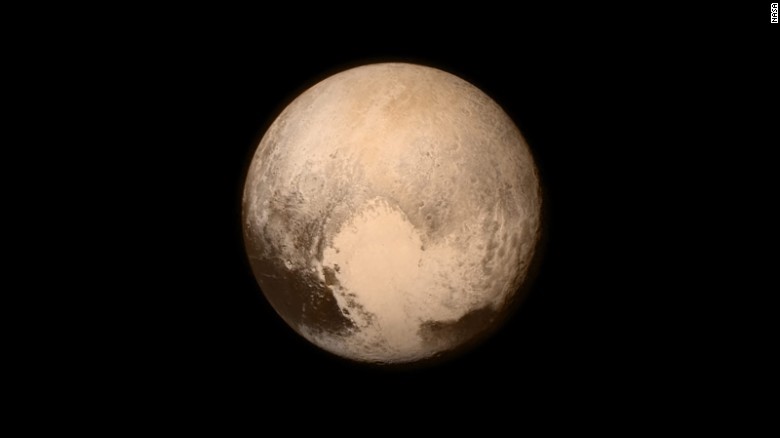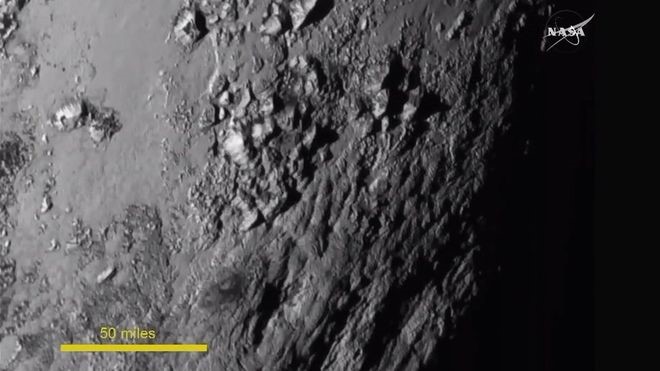Tuesday, July 14, 2015 is a benchmark in the history of humankind’s space exploration, set apart as the day NASA's New Horizon spacecraft has just completed a flyby passed Pluto, the last object/planet in our solar system to have been visited by a probe.
“We have completed the initial reconnaissance of the Solar System, an endeavor started under President Kennedy more than 50 years ago and continuing to today under President Obama,” declares the mission's chief scientist, Alan Stern.
The clearest images of the 2,370km-wide former planet were snapped just as crafted passed 12,500km away from, showcasing a bevy of information at 10 times the resolution of all the previously published images.
 Captured on Monday, 16 hours before the closest approach
Captured on Monday, 16 hours before the closest approach
According to Dr. Stern, clues on Pluto's surface allude to a number geological and meteorological activities.
“On the surface we see a history of impacts, we see a history of surface activity in terms of some features we might be able to interpret as tectonic – indicating internal activity on the planet at some point in its past, and maybe even in its present.

“This is clearly a world where geology and atmosphere – climatology – play a role. Pluto has strong atmospheric cycles. It snows on the surface. These snows sublimate – (and) go back into the atmosphere – every 248-year orbit.”
In addition to Pluto and its moon Charon, the probe will also investigate four smaller moons in the vicinity: Styx, nix, Kerberos and Hydra.

The flyby has jokingly been referred to as a mission of “delayed gratification,” because of the lengthy amount of time it took to reach Pluto, followed by the lengthy amount of time it will take to obtained all the information. Given the probe’s distance from the deep-space network, it will take 16 months to receive the data in its compressed and uncompressed form. These images are but a small fraction of all the data obtained.
Source: BBC
Advertisement
Learn more about Electronic Products Magazine





